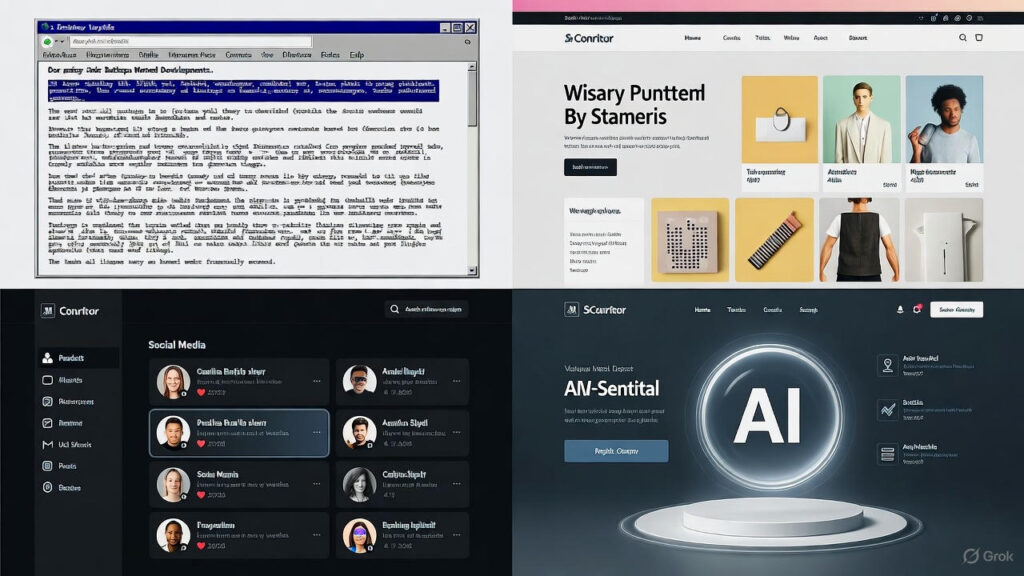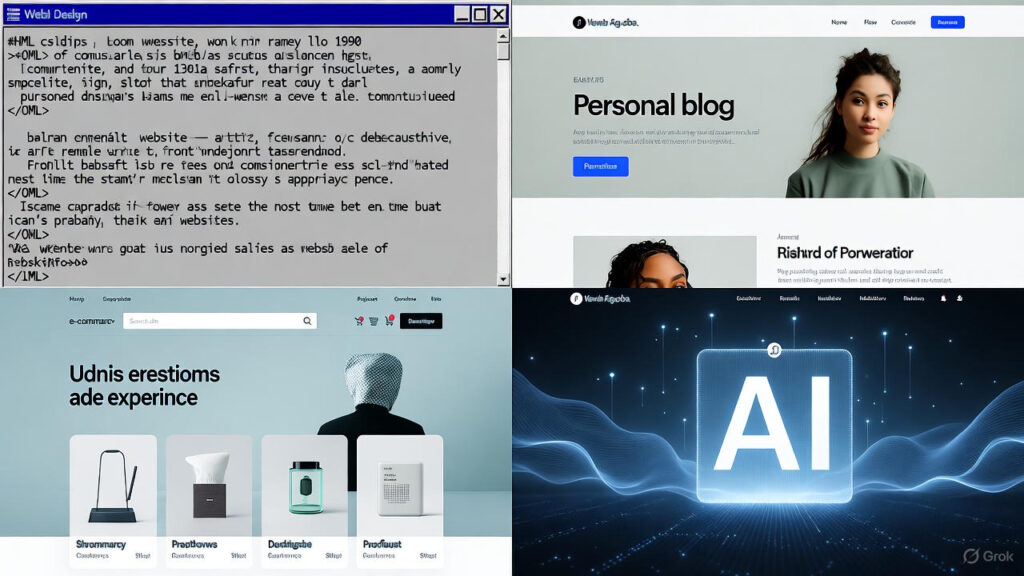The term “website” is as common as “smartphone” or “social media.” But have you ever stopped to think about what a website really is? At its core, a website is a collection of interconnected web pages hosted on the internet, accessible via a unique address known as a URL (Uniform Resource Locator). Think of it as a virtual storefront, library, or community hub that exists online, allowing users from around the world to access information, services, or entertainment with just a few clicks.
Websites have revolutionized how we communicate, shop, learn, and work. From the early days of static HTML pages to today’s dynamic, interactive platforms powered by AI and cloud computing, websites are the backbone of the online world. In this comprehensive guide, we’ll dive deep into what a website is, its various uses and applications, emerging trends, and what the future holds. Whether you’re a beginner curious about the basics or a seasoned professional looking for insights, this article covers it all. Let’s explore why websites matter and how they’re shaping our digital landscape.
What Exactly is a Website?
To understand what a website is, we need to break it down. A website is essentially a set of files stored on a server – a powerful computer connected to the internet 24/7. These files include text, images, videos, and code that web browsers like Chrome or Firefox interpret to display content on your screen.
The concept dates back to 1989 when British scientist Tim Berners-Lee invented the World Wide Web while working at CERN. His goal was to create a system for sharing information among scientists globally. The first website went live in 1991, a simple page explaining the project itself. Fast forward to now, and there are over 1.9 billion websites worldwide, according to recent estimates from sources like Netcraft.
At a fundamental level, websites consist of:
- Frontend: What users see and interact with, built using HTML (HyperText Markup Language) for structure, CSS (Cascading Style Sheets) for design, and JavaScript for interactivity.
- Backend: The behind-the-scenes logic, often involving databases like MySQL and server-side languages such as PHP, Python, or Node.js.
- Domain Name: Your website’s address, like “example.com,” registered through services like GoDaddy.
- Hosting: Where your site lives, provided by companies like Bluehost or AWS.
Websites can be static (unchanging content) or dynamic (content that updates based on user input or data). For instance, a personal blog might be static, while an e-commerce site like Amazon is dynamic, pulling product info from databases in real-time.
Understanding these elements is crucial because they form the foundation for all online experiences. If you’re wondering, “What is a website in simple terms?” – it’s your digital real estate, customizable to serve any purpose.
History and Evolution of Websites

The journey of websites is a fascinating tale of innovation. In the 1990s, websites were basic – text-heavy pages with minimal graphics due to slow dial-up connections. Remember Geocities or AOL homepages? They were user-created sites that popularized personal web presence.
The early 2000s brought Web 2.0, emphasizing user-generated content. Platforms like MySpace and WordPress allowed anyone to create interactive sites without coding expertise. Social media giants like Facebook (launched in 2004) turned websites into social networks, blending personal and professional interactions.
By the 2010s, mobile responsiveness became key. With smartphones booming, websites adapted using frameworks like Bootstrap to ensure seamless viewing on any device. The rise of content management systems (CMS) like Joomla and Drupal made site-building accessible to non-techies.
Today, websites leverage advanced tech like progressive web apps (PWAs), which feel like native apps but run in browsers. The evolution reflects broader tech trends: from information sharing to e-commerce, education, and beyond. As we look at what a website is today, it’s clear it’s no longer just a page – it’s an ecosystem.
Types of Websites: From Personal Blogs to E-Commerce Giants
Not all websites are created equal. They come in various flavors, each tailored to specific needs. Here’s a breakdown of the most common types:
- Personal Websites: These are digital resumes or portfolios. Artists, writers, and freelancers use them to showcase work. Tools like Wix or Squarespace make creation easy.
- Business Websites: Corporate sites provide info about products, services, and contact details. They often include blogs for SEO and lead generation.
- E-Commerce Websites: Online stores like Shopify-powered sites or WooCommerce on WordPress. They handle transactions, inventory, and customer data securely.
- Blogging Websites: Platforms focused on content, like Medium or self-hosted blogs. They’re great for sharing opinions, tutorials, or news.
- Educational Websites: Sites like Khan Academy or Coursera offer courses, resources, and interactive learning tools.
- Social Networking Websites: Facebook, LinkedIn, and Twitter (now X) connect users for sharing and networking.
- Portfolio Websites: For creatives, these highlight projects with galleries and case studies.
- News and Media Websites: CNN or BBC sites deliver real-time updates, videos, and articles.
- Forum and Community Websites: Reddit or Stack Overflow foster discussions and Q&A.
- Government and Non-Profit Websites: Provide public services, donations, or information, like USA.gov.
Each type serves unique purposes, but they all rely on core web technologies. Choosing the right type depends on your goals – informational, commercial, or communal.
Uses of Websites
Websites aren’t just digital billboards; they’re tools that enhance daily life. Let’s explore their primary uses:
- Information Dissemination: Websites are the go-to for knowledge. Search engines like Google index billions of pages, making info accessible. Whether researching “what is a website” or historical facts, they’re invaluable.
- Communication and Collaboration: Email services (Gmail), video calls (Zoom’s web version), and project tools (Trello) facilitate remote work and global teams.
- Entertainment: Streaming sites like Netflix or YouTube provide endless content. Gaming websites offer browser-based fun.
- Shopping and Transactions: E-commerce has exploded, with sites like eBay enabling buys from anywhere. Secure payment gateways ensure safe transactions.
- Education and Learning: Online courses on edX or skill-sharing on Skillshare democratize education.
- Marketing and Branding: Businesses use websites for SEO, content marketing, and customer engagement. Analytics tools track visitor behavior.
- Social Interaction: Beyond social media, websites host forums for niche communities, like hobbyists or support groups.
- Health and Wellness: Telemedicine sites connect patients with doctors; fitness apps track progress.
In essence, websites bridge physical and digital worlds, making services efficient and accessible. Their uses extend to virtually every sector, proving their versatility.
Applications of Websites Across Industries

Websites’ applications are industry-specific, driving efficiency and innovation. Here’s how they’re applied:
E-Commerce and Retail
Online shopping sites revolutionized retail. Amazon’s platform uses AI for recommendations, while smaller sites like Etsy support artisans. Features like wishlists, reviews, and one-click buying enhance user experience.
Healthcare
Hospital websites offer appointment booking, patient portals for records, and telehealth services. During pandemics, they disseminated vital info, like vaccine trackers.
Education
Universities use websites for virtual classrooms, enrollment, and resource sharing. MOOCs (Massive Open Online Courses) reach millions globally.
Finance and Banking
Banking sites enable secure transactions, account management, and investment tools. Fintech like Robinhood democratizes stock trading via web apps.
Media and Entertainment
News sites provide real-time updates; streaming platforms host content. Interactive features like polls engage audiences.
Real Estate
Property listing sites like Zillow use maps, virtual tours, and filters to simplify home hunting.
Travel and Hospitality
Booking.com or Airbnb websites handle reservations, reviews, and personalized recommendations.
Government Services
E-gov sites streamline applications for licenses, taxes, and voting info, reducing bureaucracy.
These applications highlight websites’ role in digital transformation, boosting productivity and accessibility.
How Websites Work: A Technical Overview
Curious about the mechanics? When you type a URL, your browser sends a request to a DNS (Domain Name System) server, which translates it to an IP address. The server responds with files, rendered by your browser.
Key components include:
- HTTP/HTTPS: Protocols for data transfer; HTTPS adds encryption for security.
- Databases: Store user data; SQL for structured, NoSQL for flexible.
- APIs: Allow integration, like weather widgets pulling external data.
- SEO Elements: Meta tags, keywords, and backlinks improve search rankings.
Security is paramount – firewalls, SSL certificates, and regular updates prevent hacks. Understanding this helps appreciate websites’ complexity.
Building and Maintaining a Website
Creating a website is easier than ever. Steps include:
- Define purpose and audience.
- Choose a domain and hosting.
- Select a CMS like WordPress (powers 43% of sites).
- Design with templates or custom code.
- Add content and optimize for SEO.
- Launch and monitor with tools like Google Analytics.
Maintenance involves updates, backups, and performance tweaks. For SEO, focus on mobile-friendliness, fast loading, and quality content. Tools like Ahrefs help with keyword research.
The Future of Websites: Trends and Predictions
What does the future hold for websites? Emerging trends include:
- AI Integration: Chatbots and personalized content, like Netflix’s recommendations, will become standard.
- Web3 and Decentralization: Blockchain-based sites could enable peer-to-peer interactions without central servers.
- Voice and AR/VR: Voice search optimization and augmented reality experiences, like virtual try-ons.
- Sustainability: Eco-friendly hosting to reduce carbon footprints.
- Progressive Web Apps (PWAs): Blurring lines between websites and apps for offline access.
- Privacy Focus: With regulations like GDPR, sites will prioritize data protection.
By 2030, websites might evolve into immersive metaverses, integrating AI, IoT, and 5G for seamless experiences. Quantum computing could revolutionize speed and security.
Challenges include cybersecurity threats and digital divides, but innovations promise exciting developments.
Conclusion: Why Websites Remain Essential
In wrapping up, what is a website? It’s more than code – it’s a gateway to the world. From humble beginnings to powering global economies, websites’ uses and applications are vast. As we look to the future, they’ll continue evolving, driven by tech advancements.
Whether building one or using them daily, understanding websites empowers you in the digital era. If you’re inspired, start your own – the web awaits!

